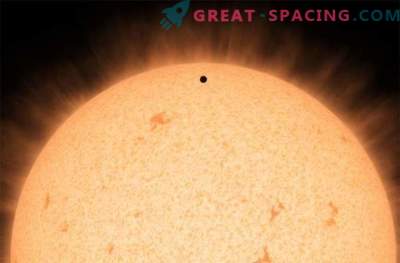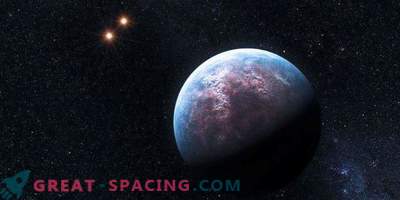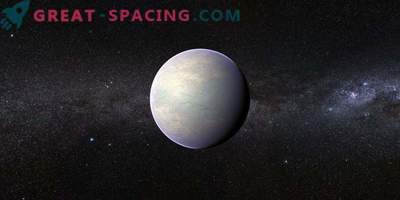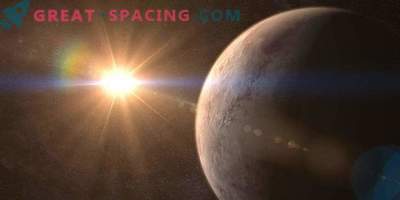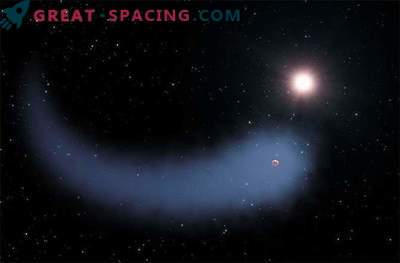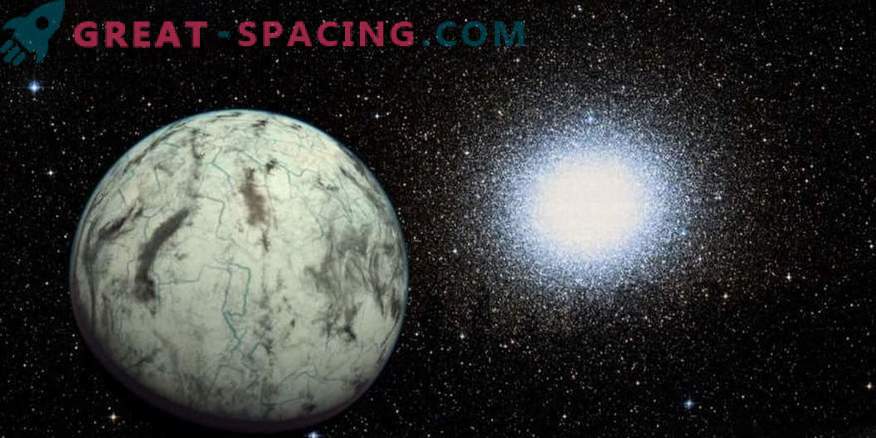
A promising and intriguing planet Kapteyn b found in 2014 revolves around the single star Kapteyn in the painter constellation. It is removed from us for 13 light years, however its age reaches the whole 11.5 billion years. That is, this world appeared just 2 billion years after the Big Bang event.
They still argue about the nature of the planet, calling it a warm super-earth, Neptune's twin or minipetun (gas dwarf). The exoplanet rotates around the subdwarf at a distance of 0.168 a. e. (half the Sun-Mercury distance). The surface temperature is 10 ° C during the day and -50 ° C at night, which provides relatively comfortable living conditions.
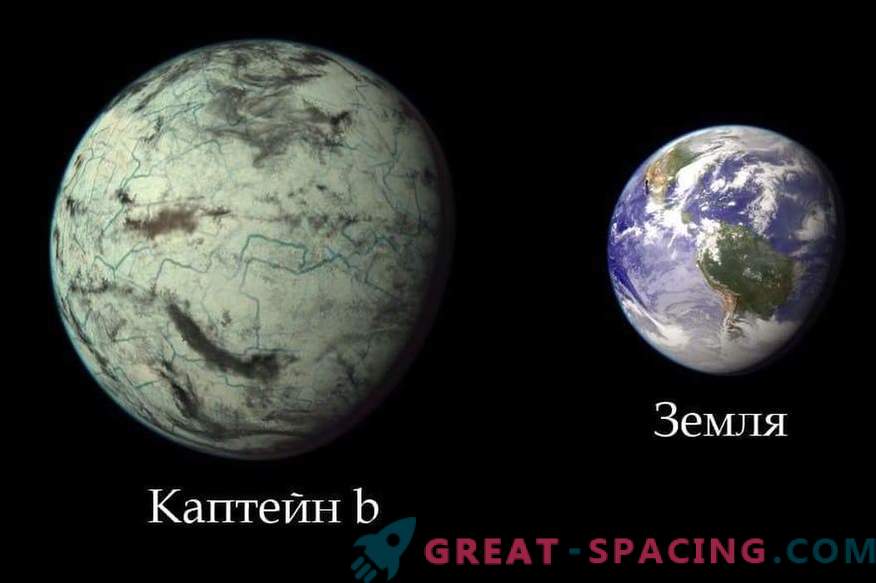
Comparative sizes of the exoplanets Kapteyn b and the Earth
From the star sub-dwarf comes in 250 times less light than the Sun provides us, so the planet could save the atmosphere. Kapteyn spends 48 Earth days on a complete revolution around the star (the duration of the year). On the mass of exoplanet is 5 times greater than the earth. Located in the star zone of habitability, therefore on the surface water can remain in a liquid state. It is surprising that this planet has managed to survive. It is believed that the star Kapteyn, together with the planetary system, appeared on the territory of the Omega Centauri dwarf galaxy. But later this galaxy was swallowed up by the Milky Way. As a result, the star was thrown into our galactic halo and the planet miraculously managed to survive.
According to the Earth's similarity index, the planet Captain b reaches the rate of 0.67. For example, Mars is only 0.64, which means there is more in common between Earth and Captain. Many researchers are convinced that life can be located on the planet. The age is also in favor of this. A lot of time is spent on the development of life, which means that not only primitive microbes can be found on its surface, but also more developed organisms.
